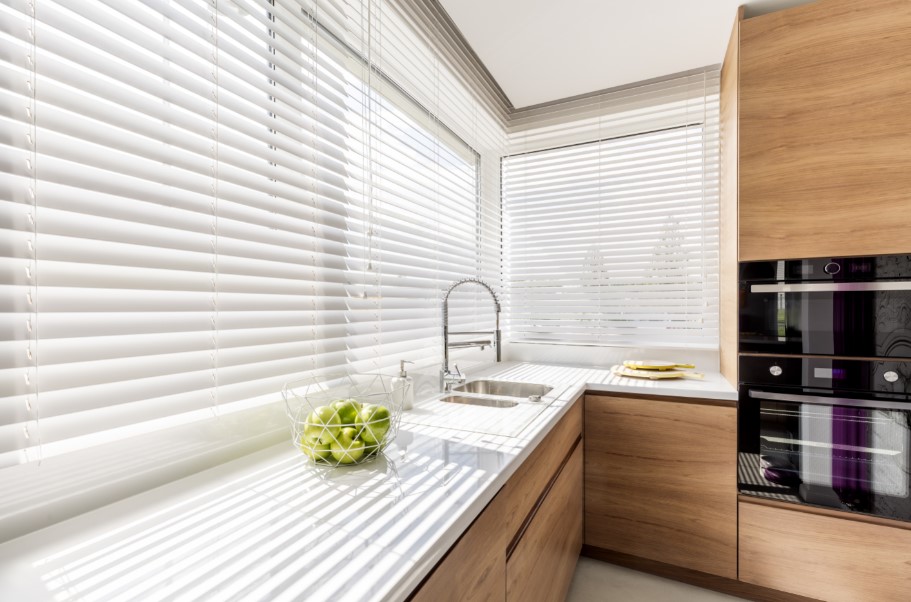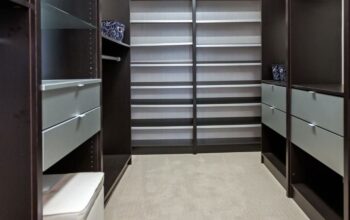When building a home, it will never be complete without two or more windows as they give way to proper ventilation and natural lighting inside. Basically, windows are an exceptionally important component of a home that can make or break a comfortable living experience.
With well-built and maintained windows, energy efficiency can be attained, especially during the summer and winter seasons. To add more aesthetic appeal to your home, it’s worth investing in beautifully-designed and functional windows. Moreover, it’s an excellent asset to have window coverings as well.
What Are Window Coverings?
Window coverings, or window treatments, are essentially a material that covers and protects residential windows for the purpose of privacy, energy efficiency, sun protection, and home value. Often overlooked, your choice of window covering greatly affects not only your window itself but the entire home and its living experience.
There are mainly four types of window coverings: curtains, drapes, shades, and blinds. While the first three window treatment types are all made of fabric, blinds stand as a unique type of window covering because they’re not a solid length of fabric, but are derived from materials like aluminum, wood, bamboo, or vinyl.
On average, homeowners allot USD$93 to USD$403 for the treatment of each window, unit and installation included. While they may seem costly for a homeowner, regular care and maintenance will guarantee that window coverings will last a long time. If you want to get the best value for your money and never go out of style, there’s no better option than blinds.

Blinds As A Type of Window Covering
Window blinds are a type of window covering that has either long horizontal or vertical slats; they are made from sturdy material like wood, metal, and plastic, often controlled by pulling a cord or using a remote control. When the blinds are on, the slats will rotate to put spaces between them, then once turned off, the slats will overlap and block light coming through.
Blinds exist in a variety of materials, colors, and finishes, but the main distinction to help you decide which blinds to choose for your windows is the slats’ orientation. With respect to orientation, they can be classified as horizontal window blinds and vertical window blinds.
Horizontal vs. Vertical Blinds
As their names simply imply, horizontal blinds have horizontal slats while vertical blinds have slats fastened together vertically. When choosing between them, you shouldn’t only take into account which fits better visually to your window, as you might be compromising your privacy and energy consumption if you do this. Here are key considerations in differentiating the two to determine which type of blinds are perfect for your windows:
- Window Size and Compatibility
Generally, it’s easier to choose between horizontal and vertical blinds according to your window size. Horizontal blinds are more suitable for common windows that are smaller in size. If you have a typical bedroom window that’s small, narrow, and averagely tall, horizontal blinds will fit them best.
On the other side, vertical blinds are more specific to wide, large, and tall windows, such as bay windows, sunroom windows, and windows that are particularly large in size. Also, vertical blinds will look stunning on large and tall doors, including sliding, patio, and large French doors.
If your window sizes don’t match commercial window blinds, you can opt for custom-fitted blinds that will hug your windows better. Fitting the blinds exactly on your window can allow for better lighting, sun protection, privacy, and energy efficiency.
Lastly, in terms of individual slats, the rule of thumb is to choose wider slat widths for larger windows and doors.
- Light Entry, Sun Protection, and Energy Efficiency
The sun changes its angle throughout the day. It is at its hottest during noon, which means allowing light to enter your home during this time can make your indoors feel more humid and can even make your skin susceptible to skin damage. The sun has a warmer light during late afternoons and has a minimal effect on your home’s temperature indoors.
If you want to remain comfortable indoors all day, it’s essential that you have control over the amount of light that enters your home – and this is something that horizontal and vertical blinds can help you with. Window blinds give you the ability to decide how much light you’re getting indoors by adjusting the angles of the slat.
If you don’t want your home to feel humid during noon, you can completely close your blinds so it doesn’t allow any light from the sun to enter. Conversely, if you want the sun’s rays to enter your home in the morning, you can adjust your blinds accordingly so light can peep through the windows.
Horizontal and vertical blinds allow you to control the light that enters your home and protects your indoors from too much heat outdoors. But when choosing which to use, it’s essential to assess the angle of your windows – horizontal blinds offer better control of sunlight when your windows are facing south or north while vertical blinds work best for windows facing west or east.
When talking about energy efficiency, vertical blinds will take the prize as the slats overlap better than their horizontal counterpart. Because of its better overlapping action, it can keep indoors maintain a low temperature during hotter months and preserve the needed heat in the winter.
- Operation
Another reason why horizontal window blinds suit smaller windows is that they can be manually operated without any resistance. If there are any problems with the blinds, such as tangled or overlapped slats, they can be easily adjusted. Also, they have a quieter operation than vertical blinds.
Contrarily, vertical blinds are perfect for larger windows as they’re operated through either stacking the slats on the corner or peeking through them.
If there are any problems with the slats, you can tilt them at a certain angle to make it easier for you to fix tangled or overlapped slats. Moreover, broken vertical slats can be fixed using a paper clip, bread clip, or toothpick. Simply stick any of these items across the broken vane, check if the blind fits back into its clasp, and you’re good to go.
- Privacy
In terms of privacy and security, horizontal blinds are much preferred. When peeking out of the window, you can simply tilt its slates. While you have access to look on the outside, you’ll still remain private from the inside, which is ideal for personal spaces like bathrooms.
Vertical blinds still offer some form of privacy, but they will work better in the common spaces of your home. This type of blinds tends to move side to side, especially when it’s windy, which may compromise your privacy.
- Cleaning and Maintenance
Last but not least is a consideration that identifies which is more homeowner-friendly when it comes to cleaning and maintenance. This aspect of owning window blinds is paramount as this will dictate the lifespan of the coverings and the blinds’ level of reliability through years of use.
Horizontal blinds are more difficult to clean than vertical ones as there are more complicated attachments within the slats like its lift cord and strings that can cause difficulty. However, since they don’t touch the flooring, they’re less likely to collect dust and dirt from that area.
Consequently, vertical blinds have vertically running slats that you can easily tread along while you’re cleaning. But, since the vertical slats aren’t connected with one another like horizontal ones are, they can be more susceptible to wear and tear.
Takeaways
Once you have decided to get window blinds as your window coverings, the decision-making doesn’t stop there as you’ll still have to decide whether to get horizontal or vertical blinds. Overall, both types of blinds have excellent, reliable performance, but it’s important to know their differences first before purchasing one for your windows.
Related Posts












